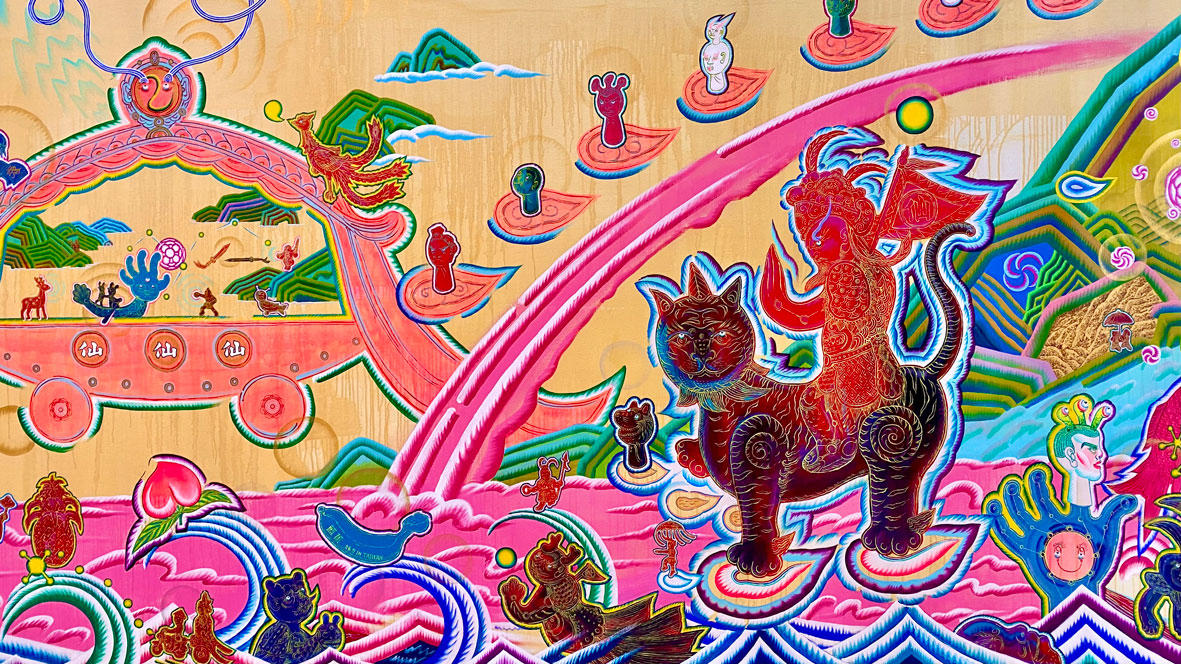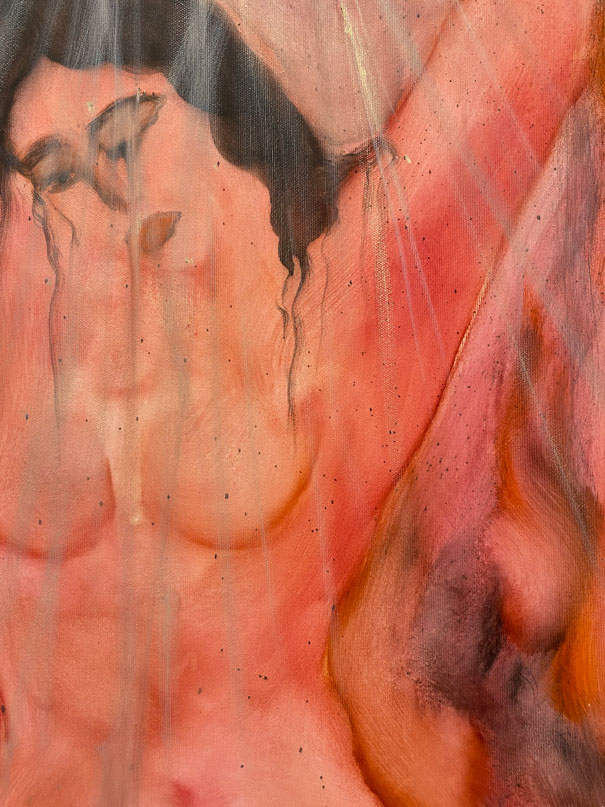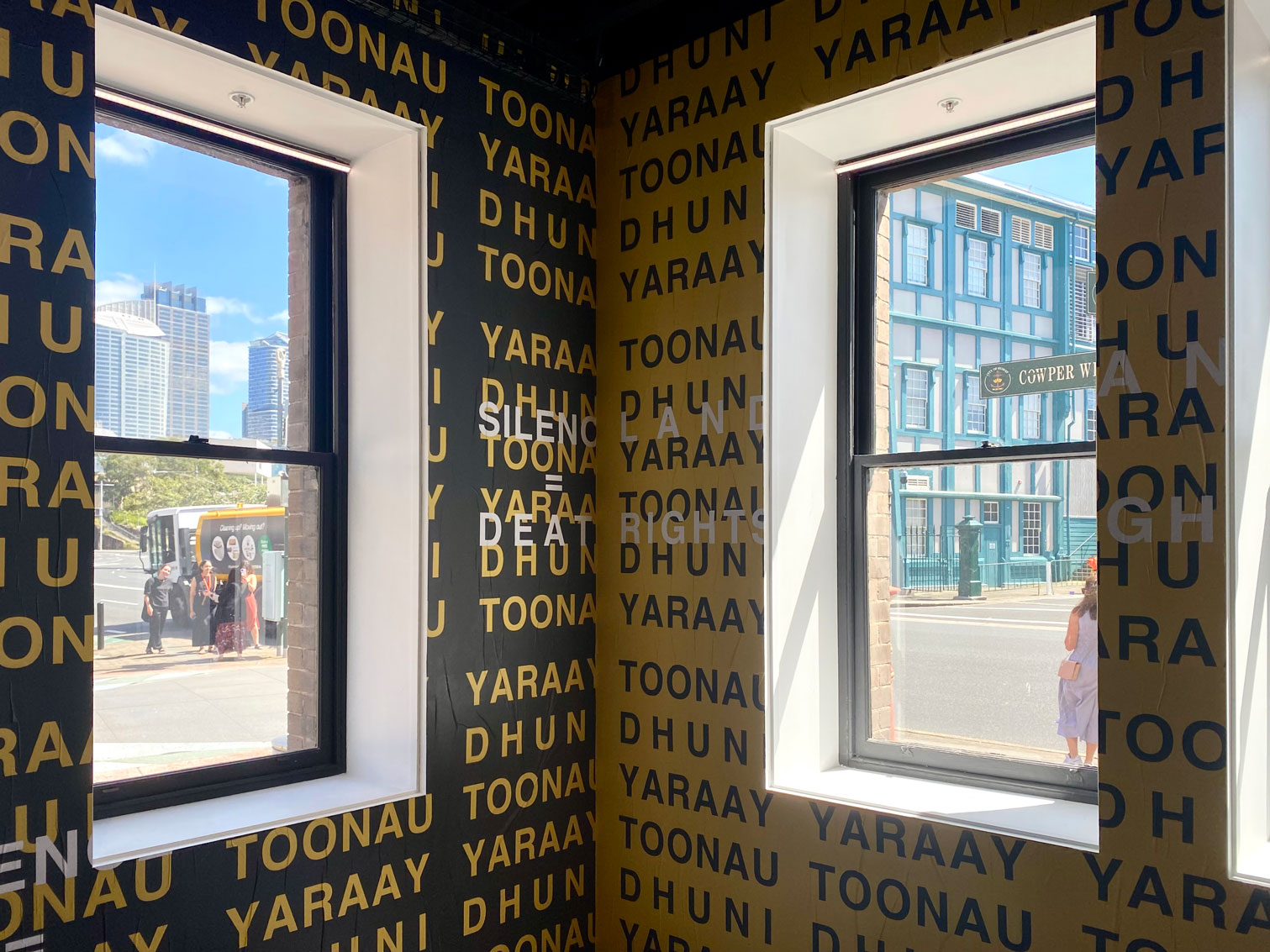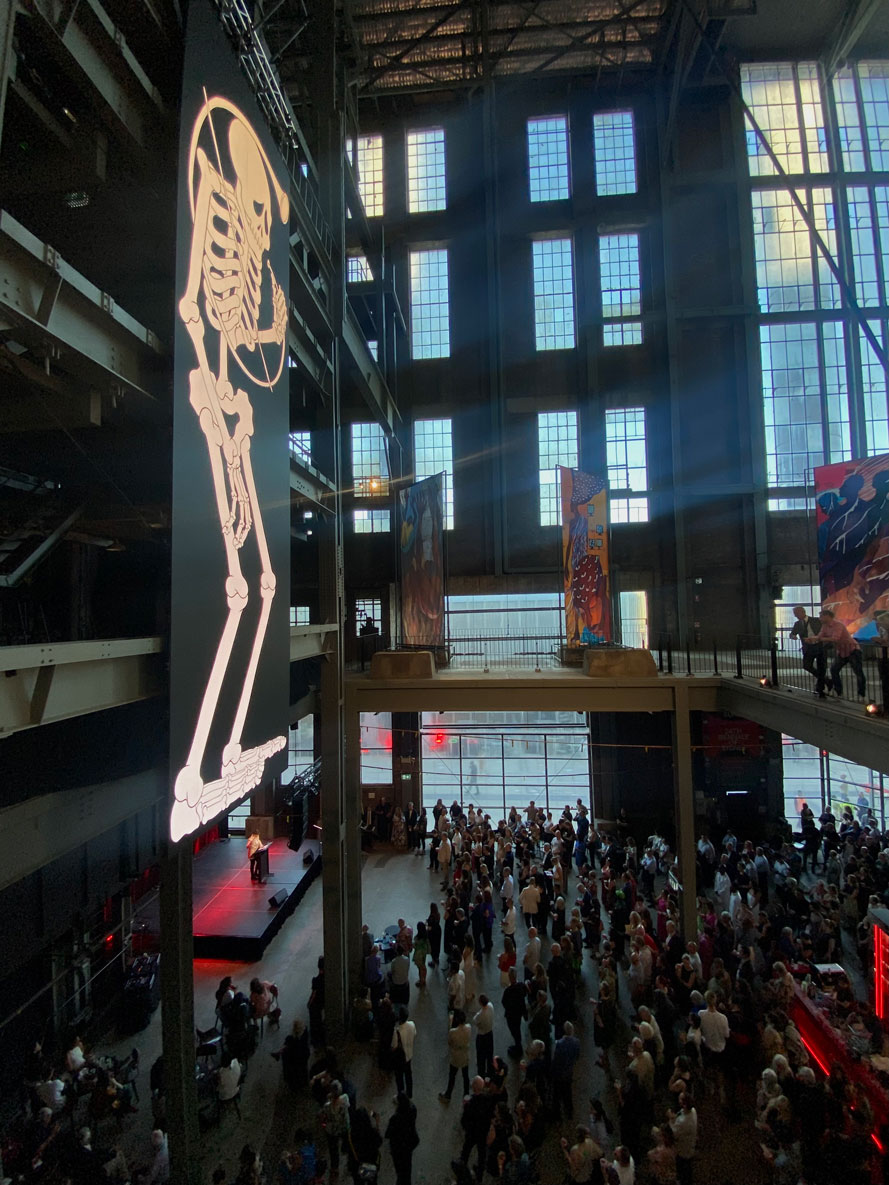Sun creeps into the historic White Bay Power Station to the sound of birdsong — an awakening from the mythical “one hundred years” of soot and slumber, its first public appearance and the new home of the Sydney Biennale. Özgür Kar’s video work of a giant cartoon skeleton accompanied by a flock of little tweeting birds, overlooks the boiler house, the occasional sound of its horn blowing, a sort of startling yet musical memento mori while walking throughout the building. Over the course of the day, the building shifts under changing light, revealing, and denying the intimacies of its history.
Originally built in 1912, the Power Station once charged up the city’s electrical grid with coal, burning away on the western side of ANZAC bridge while overlooking the city it lit up. Eventually decommissioned in 1984 due to the introduction of a broader range of energy production, it signalled a city-wide shift away from coal power (though not in its entirety). It’s hard to imagine the state of disrepair the building had fallen into when walking around on sunny mornings, the old machinery quiet where fire and coal once roared.
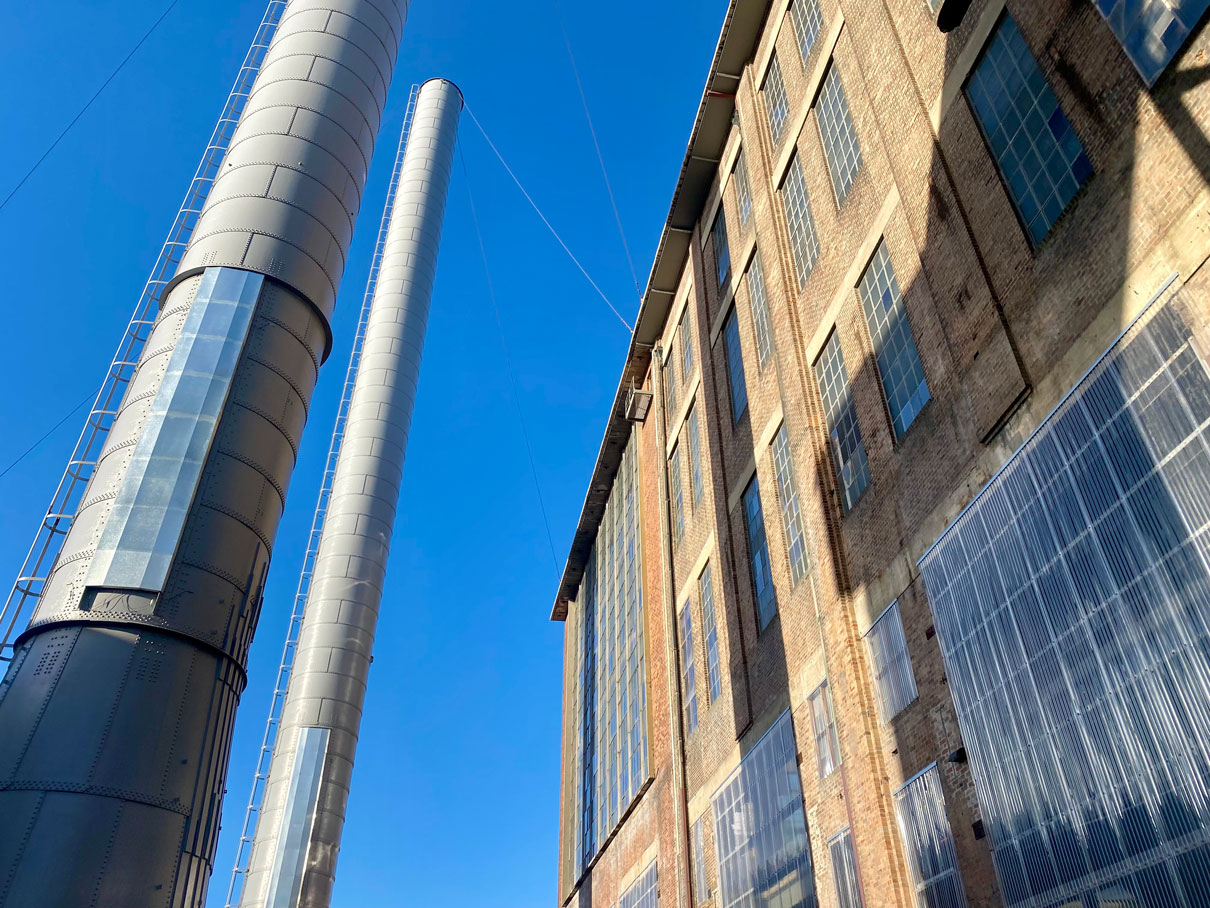
As the newest venue for the Sydney Biennale, this year’s theme Ten Thousand Suns begins on this question of troubled pasts and optimistic futures. Artistic directors Cosmin Costinaş and Inti Guerrero focus on celebration and joy as ways of resistance — what it means to move on from troubled pasts and bring them into the present. In recent times as we navigate through local and global conflict, joy may not initially appear in line with protest, but uplifting and celebrating cultures in themselves resist erasure.
Artists who have come from backgrounds whose grief and struggle spans over decades (sometimes centuries) of colonial and industrial degradation, have found their own ways of joyful expression in this loss, becoming a resistance against what has been taken. It can manifest in many forms, whether in the continuation of skilled crafts despite the environmental eradication of natural materials or even the creation of flamboyant carnival displays of the nuclear bomb that dropped over Hiroshima and Nagasaki (the video exhibited in the boiler house of White Bay). Navigating through our collective grief is non-linear, joy is not the absence of grief nor is it the absence of criticality, and throughout the seven total venues participating in this year’s Biennale, we see how they try to expand on the complexity of celebration.
Space and familiarity is used in an almost operatic sense. The different galleries become stages for contained performances — small inquiries into their real world counterparts. Finding yourself in the underground bunker of UNSW’s Art and Design campus, the low ceilings make you work through the space like a cave system. Agnieszka Polska’s four channel video is projected here in full body height, simulating the ambiguity of that experience. Tonally, every space is unique, even the upper level of the Paddington campus which is all sand, desert, and gold leaf trickling in a stream.
The soft sculptures of Eric-paul Reige and the intricate weavings of Cristina Flores Pescoran are also accompanied by performance activations, an essential insight into the ways their works influence our environments. In otherwise historic and static spaces, they blend into our experience an immediacy that jumps out at us. Reige’s four hour performance of “weaving dance” at White Bay was a particularly tactile and animated invitation into his own exploration of generational practices in textiles. The Pacific Sisters at the Art Gallery of New South Wales similarly embody this sense of living identity in the otherwise colonial context of the gallery, their costumes on display for the duration of the Biennale. Costume, physical and metaphysical, allow for theatrical freedom in expression of identities — these avatars embodying and amplifying parts of our culture worthy of celebration.
Despite many artists having multiple works in different Biennale locations, they are all presented with different approaches to the idea of resistance. Though this may not motivate you to explore all seven locations, I greatly admired the depth it gave to each artist’s practice — a luxury rarely afforded for anyone considered “emerging”.
While there is much to be said on the format of the Biennale and whether or not their immediacy is actually felt rather than described, this year’s considerations of resistance are good accompaniments to current conversations. In light of this year’s Mardi Gras protests, the tragic deaths of Jessie Baird and Luke Davies, and the ongoing war and genocide in Palestine, I think the flaw in the slow two year planning process for the Biennale is apparent. It is hard in our collective anger to think of celebration even if it aligns with the current spirit of protests. This is not a criticism of the curation, the works, or artists who all fight for the visibility of a range of pressing issues, but it can still feel bitter to turn our attention away from the urgency of current affairs. I think in this way the exhibition (intentionally or not) asks us to expand the capacity of our resistance, what it means to keep practices alive, to paint portraits of those who have come before us.
Art deserves no grand statement, what tracks change and difference is memory and the routine of it all. What breaks us free from it? How can we share these moments without looking back with the same anger and scorn of the present? How does the early morning sun change the look of a building which has sat in night for 100 years?
The 24th Biennale of Sydney takes place 9 March — June 10 2024.




